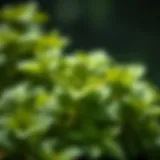Understanding Termite Swarming After Treatment
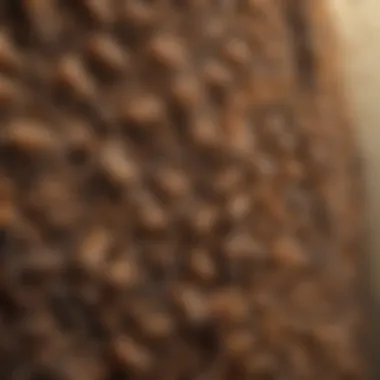

Intro
After a termite treatment, it’s not uncommon for homeowners to see a swarm of these pesky insects flying around their property. This behavior can be unsettling and may leave many wondering if their treatment was effective or if their home is still at risk. Understanding the reasons behind termite swarming, especially post-treatment, is crucial for homeowners, DIY enthusiasts, and pest control professionals alike. This article will shed light on the mechanics of termite behavior, present strategies for prevention, and offer insights into treatment options available after an infestation.
Termite swarming signals the reproductive phase for these insects. This behavior, while seemingly alarming, is a natural part of their life cycle. The swarming often takes place during certain times of the year, typically in warmer months when conditions are right for mating and establishing new colonies. However, spotting this phenomenon after treatment can be misleading. It’s vital to differentiate between a healthy colony that has been adequately treated and one that remains a threat.
We will explore the complexities of pest identification, delve into effective prevention strategies, and navigate the landscape of treatment options that can either be chemical or natural. This comprehensive guide aims to equip you with knowledge, so you can respond proactively rather than reactively in the face of termite threats.
Prologue to Termite Swarming
Termite swarming is more than just an unsettling sight; it’s a critical aspect of understanding termite behavior post-treatment. For homeowners, mastering the nuances of this phenomenon translates to effective pest management and safeguarding their properties. Recognizing when and why swarming occurs can greatly influence the choice of treatment and the strategies employed for prevention.
When the weather warms, typically in the spring or early summer, termite colonies prepare to send out new reproductives. This is known as swarming season, which signals the start of the mating process for these pests. Homeowners should grasp the significance of this because swarming termites might resemble a re-infestation. It is key to differentiate this behavior from an active threat.
To delve deeper, let’s explore the lifecycle of termites and understand what swarming truly entails. This understanding will equip homeowners with the knowledge to distinguish between a mere nuisance and an actual infestation threat, thus ensuring better preparedness after treatment.
"Understanding termite swarming sets the stage for effective management strategies."
The Lifecycle of Termites
The lifecycle of termites is a fascinating journey that profoundly affects their behavior. Starting from eggs, termites undergo several stages before reaching maturity. The three main castes—workers, soldiers, and reproductives—each have unique roles that contribute to the colony's survival and the eventual swarming process. While workers ensure food and maintain the nest, soldiers protect it from threats. Reproductives, on the other hand, are the ones that take flight during swarming.
These new kings and queens, once paired, will land, shed their wings, and establish new colonies, continuing the cycle anew. The implications of this lifecycle for homeowners are significant. An effective treatment might eliminate adult termites, but understanding their lifecycle can help in planning follow-ups and prevention tactics.
What is Swarming?
Swarming is the natural part of a termite’s reproductive process. When conditions are just right, often after rainfall or in warmer temperatures, mature termites leave the colony in droves. This spectacle can be alarming for homeowners who may mistake these swarms for an infestation because large groups of flying termites may cluster around light sources or try to enter homes.
Swarming typically occurs in the evening or during daylight hours, and once they’ve mated, the new termites are in search of a new home. Knowing what swarming means helps homeowners recognize that, although it may look like their treatment has failed, it is simply the life cycle of the termites at work. Thus, the importance of timely and effective treatments cannot be overstated.
Signs of Termite Activity
Recognizing signs of termite activity is critical for any homeowner who wants to safeguard their property. Often deemed as silent destroyers, termites can wreak havoc before any visible damage is apparent. Knowing how to identify their presence not only helps in taking timely action but also in devising effective strategies against future infestations.
Identifying the signs is like having a sixth sense; being alert can save a home from significant harm. This section will unravel the nuances of detecting these pesky pests, providing clarity and confidence for homeowners.
Identifying Termite Presence
When it comes to spotting termites, attention to detail is key. Many people might not know that termites can be lurking silently, causing damage long before a homeowner even realizes they’re there. Here are some [important] methods to determine their presence:
- Mud Tubes: These are often the first thing one might notice. They resemble pencil-sized tunnels made of mud, which termites construct to travel between their nest and a food source. Check your home’s foundation or basement corners for these structures.
- Swarmers: As discussed in the section about swarming, flying termites, also known as alates, are a clear indication of an active colony. If you see them around your home, it’s time to take action. Generally, they swarm during spring, particularly after rain.
- Damaged Wood: Tapping on wooden structures can reveal hollow sounds, suggesting termites have taken a liking to it. Patches of wood that are soft or have been eaten away are also indicators.
- Frass: This is the term for termite droppings, which appear like sawdust or small pellets. Finding frass can alert you to a nearby infestation.
Being able to identify these signs not only assesses current pest activity but also helps homeowners understand when it's necessary to seek help from professionals.
Key Indicators of a Swarm
Once termites swarm, it’s a sign that the colony is thriving and actively reproducing. Understanding the distinct signs of a swarm can provide crucial insights for homeowners. Here are few key indicators to consider:
- Presence of Wings: After a swarm, discarded wings piled up near windowsills or doors is a tell-tale sign of termite activity. These wings can be spotted easily and are an important sign that something's awry.
- Time of Year: Swarming typically occurs in spring, so awareness during this season is essential. If you notice an increase in winged insects flying about, especially during a warm day following rain, be cautious.
- Location: While swarming termites can move inside your home, they often appear near windows, outdoor lights, and entry points. Keeping a lookout in these locations can help anticipate any potential risks.
Remember, recognizing these indicators early can save a homeowner from more extensive damage later.
"Inspecting your home regularly can make all the difference. It’s better to be proactive than reactive when it comes to pest management."
Understanding Swarming Post-Treatment
Why Do Termites Swarm After Treatment?
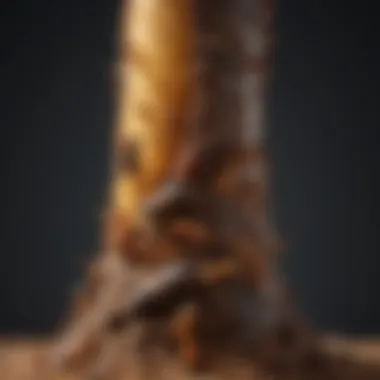

After a termite treatment, it may seem counterintuitive for swarming to occur. Yet, it’s a common event. Swarming is generally associated with the reproductive phase of termites where they leave the colony to establish new nests. When treatments such as chemical barriers or baiting systems are applied, the disruption can provoke a response in the colony. Essentially, the stress caused by the treatment may force adult termites to leave in search of new environments.
To put it bluntly, a treatment doesn’t wipe out the entire colony immediately. Instead, for a period, you might see active termites reacting negatively to the applied substances. This reaction can include swarming behavior. Termite swarming can take place at any time, but it often occurs during warm, humid months, particularly in spring and early summer.
- Disturbance from Treatment: The treatment disturbs the colony, pushing them to find new homes.
- Variation in Species: Different termite species swarm at different times, so what you see may depend on the type of termite present.
- Instinctual Behavior: It’s innate for termites, particularly the reproductive ones, to swarm when they sense a need to propagate the colony, irrespective of recent treatments.
Misconceptions About Swarming
Many homeowners harbor misconceptions regarding termite swarming post-treatment. One prevalent myth is that the presence of swarming termites indicates a failure of treatment. On the contrary, swarming already instigated may just be surfacing in the aftermath of a treatment.
Unraveling this myth can alleviate stress. It’s pivotal to realize that swarming does not necessarily equate to high activity inside the structure. Often, those flying termites are scouting for new locations and may not pose immediate harm to your property.
- Myth: "Swarming means my home is infested again."
- Myth: "Treatments don't work if I see swarmers."
- Reality: It’s a natural behavior; swarming is a regular part of the termite lifecycle.
- Reality: Current treatments may still be effective, and the swarming can just be a delayed response.
"Educating oneself on the behavior of termites helps in understanding what signs to watch for. Education is the best defense against misconceptions."
It's essential for homeowners to maintain a clear perspective when encountering swarms after treatment. Knowledge is power, ensuring you can take informed actions without unnecessary panic. Staying vigilant, yet informed, can lead to an effective long-term pest management strategy.
Effects of Treatment on Termite Behavior
Understanding how treatment affects termite behavior is key for homeowners trying to make sense of their unwelcome guests. After treatment, whether through chemicals, bait systems, or natural methods, termites may not necessarily disappear right away. In fact, it's common for homeowners to notice certain changes in termite behavior.
Focusing on these behavioral shifts can provide homeowners peace of mind and a better grasp of ongoing pest control measures. It's essential to recognize that while treatment is designed to eliminate termites, the pests don’t always follow a predictable pattern post-treatment. Here are some of the notable aspects:
- Behavioral Adaptations: Some termites may adapt to treatment methods. They might change their feeding habits or even their activity patterns, which can be perplexing for homeowners.
- Swarming Dynamics: The swarming event may indeed coincide with treatment timelines, giving a sense that the problem is persisting or increasing.
- Long-term Effects: Understanding how treatment impacts termites over the long haul is crucial for setting future expectations.
With these considerations in mind, let's delve deeper into the specific behavioral changes that occur after a treatment has been applied.
Behavioral Changes After Treatment
After a treatment, the response of termites can vary widely based on the method employed. Typically, pest experts note these significant changes:
- Increased Activity: Sometimes, termites may initially appear more active. This can happen as they react to the treatment; it's their instinctive way to try to escape or survive the effects.
- Altered Foraging Habits: Termites that have been affected might change their routes or where they forage for food. Homeowners may observe this shift as they find termite activity in unexpected areas, which can be alarming.
- Coupling and Swarming: Even after treatment, there’s a chance that some termites may still swarm. This behavior doesn't always mean that a reinfestation is occurring. They may be in desperate attempts to relocate or form new colonies in response to treatment pressure.
These changes can cause confusion and concern among homeowners. However, understanding these patterns is essential for effective long-term management.
Timing and Conditions Favoring Swarming
The timing and conditions for termite swarming post-treatment are influenced by various environmental factors, and they can be a real conundrum for homeowners. Here are some elements to keep in mind:
- Seasonal Effects: Swarming typically takes place during certain weather conditions, particularly damp, warm environments typical of spring and early summer. If treatment has been applied just before this season, the subsequent few weeks may see increased swarming activity.
- Aftermath of Disturbance: If termites sense danger or disturbance—be it from treatment or structural changes in their habitat—they may swarm as part of their survival instinct. They see this as an opportunity to propagate before they potentially face extinction.
- Pheromone Signals: This is crucial; termites rely heavily on pheromones for communication. If some termites survive, they might emit signals that prompt others, still in hiding, to swarm.
In sum, recognizing the patterns of behavior and timing surrounding termite swarming can lead to a more targeted pest management strategy following treatment.
Types of Treatments and Their Efficacy
When it comes to handling termite infestations, understanding the various treatment types and their effectiveness is pivotal. Getting rid of termites does not solely rely on killing the visible pests; it’s also about eradicating the entire colony and preventing future infestations. This section will elucidate the nuances of different treatments, their benefits, and considerations, helping homeowners like you make informed choices.
Chemical Treatments
Chemical treatments are often the first line of defense in termite control. These treatments typically involve the application of insecticides specifically formulated to target termites. One prevalent method is the utilization of liquid termiticides, which are applied to the soil around the foundation of the home.
The efficacy of chemical treatments hinges on their ability to create a barrier that prevents termites from entering the structure. According to research, if applied correctly, these chemicals can remain effective for several years. However, there are various considerations:
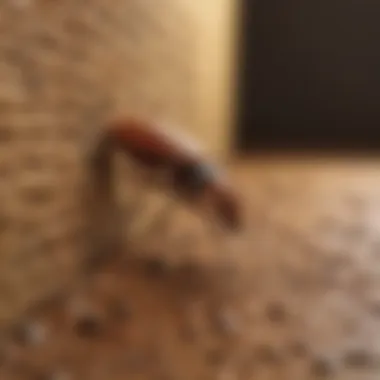

- Application Method: Professional application is often recommended since improper use can undermine effectiveness.
- Environmental Impact: Many homeowners worry about the potential environmental effects of chemical usage. Selecting low-toxicity options can address these concerns.
- Future Treatments: Similar to medicine, if the initial treatment fails, it may necessitate more aggressive approaches, including digging up and treating the soil.
"Understanding local regulations regarding pesticide use is essential. Always check on your region's guidelines before choosing a treatment."
Natural and Alternative Solutions
For homeowners keen on eco-friendliness, natural and alternative solutions represent a viable option in termite management. These methods often emphasize prevention and long-term control rather than immediate extermination. Here are some noteworthy alternatives:
- Boric Acid: This natural insecticide disrupts the termite’s digestion. When termites ingest it, they gradually perish. It’s often mixed with sugar to entice termites, making it a dual-purpose bait.
- Nematodes: These microscopic worms can act as biological control agents. They penetrate and kill termites, and they are completely safe for humans and pets.
- Essential Oils: Certain essential oils like orange oil contain compounds that are lethal to termites. While they may not eradicate an entire colony, they can be beneficial in small-scale infestations or as a preventative measure.
- Moisture Control: Termites thrive in humid environments. Addressing any leaks and improving drainage can deter termite infestations, making homes less appealing.
Each of these methods has its own benefits and drawbacks, and homeowners must assess what works best for their individual situations. Combining various treatments can often lead to more effective long-term solutions, enhancing overall efficacy in pest management.
Post-Treatment Recommendations
After termite treatment, it's crucial to take a step back and reassess the situation. This is not just about getting rid of bugs. It's about maintaining a fortress against future invasions. Understanding what to do post-treatment can significantly impact the effectiveness of your initial measures and offers peace of mind.
Monitoring and Inspection Methods
Keeping a keen eye on your home after treatment is a smart move. Monitoring helps identify any signs of termite activity early. Here are several effective techniques to keep in mind:
- Routine Checks: Set a schedule for regular inspections of your property. Every few months is usually recommended. Focus on areas that are often damp or dark, like basements and crawl spaces.
- Identify Damage: Look out for sounds of munching, especially in wooden structures. If you spot tunnels or hollow sections in wood, it’s worth investigating.
- Use Bait Stations: Installing bait systems provides ongoing monitoring. These traps can alert you to termites and can be effective even after initial treatment.
- Track Swarming Events: Be vigilant during peak swarming seasons. A swarm could indicate that the treatment hasn't completely solved the problem. When you observe wings scattered on the ground or in spider webs, it's essential to evaluate whether further action is required.
By staying proactive in monitoring and inspecting your home, you're giving yourself the best chance to fend off these critters long-term.
When to Seek Professional Help
There are moments when it’s clear that DIY methods just won’t cut it, and acknowledging that can save a homeowner a bundle in future repairs. Here’s when to consider calling in the pros:
- Increased Activity: If you notice swarmers or increased signs of termite activity post-treatment, it’s a red flag. It’s better to be safe than sorry.
- Signs of Damage: If your regular inspections reveal significant damage, such as sagging floors or hollow-sounding beams, professional insight is essential.
- Failure of DIY Measures: Sometimes, despite individual efforts, the problem persists. If your bait stations or traps aren't catching anything but dust, reaching out to experts is a solid strategy.
- Inadequate Treatment: If you suspect that the treatment used wasn't effective or appropriate for your specific situation, don't hesitate to get a second opinion.
Professionals have the necessary tools and insights into termite behavior that a homeowner might not possess.
"Realizing when to ask for help can be the difference between a lingering issue and a resolved problem."
By addressing these aspects, homeowners can not only feel more comfortable in their spaces but also ensure they are safeguarding their investment.
Preventive Measures and Best Practices
When it comes to dealing with termite swarming post-treatment, preventive measures should be at the forefront of every homeowner’s mind. Understanding that such swarming can be a sign of an ongoing or new infestation is critical. This proactive approach not only helps in securing your home but also minimizes the risk of future headaches related to pest management.
By implementing effective preventive strategies, you create a barrier that discourages termites from entering your home. Investing time in home maintenance and landscape management may seem tedious, but the benefits far outweigh the efforts:
- Reducing future treatment costs
- Protecting your property’s value
- Enhancing peace of mind
Let’s break this down further.
Home Maintenance Tips
Home maintenance is your first line of defense against termites. Here are some practical tips that can fortify your home:
- Seal Cracks and Openings: Inspect the exterior of your house. Seal any gaps or cracks around windows, doors, and foundations with caulking. Even small openings can act as entry points for termites.
- Reduce Moisture Accumulation: Termites thrive in damp environments. Ensure that gutters and downspouts direct water away from your foundation. Consider installing drainage systems in areas prone to flooding.
- Maintain Your Yard: Keep wood piles, mulch, and shrubs at least six inches away from your home. Additionally, ensure that firewood is stored at least five feet off the ground. This minimizes the chance of wood contacting the foundation and provides a habitat for termites.
- Inspect Wood Structures: Regularly check wooden beams, decks, and fences for signs of termite damage. Early detection can prevent extensive exposure and costly repairs.
Landscape and Yard Management
Beyond the walls of your home, yard management plays a significant role in termite prevention. Here’s how you can effectively manage your outdoor space:
- Trim Back Plants: Keep plants and shrubbery well-trimmed and ideally away from the home’s exterior walls. Overgrown vegetation creates humidity that can attract termites.
- Use Termite-Resistant Landscaping Materials: Consider using crushed stone or gravel instead of mulch around the foundation. These materials don’t hold moisture as mulch does, reducing termite attraction.
- Conduct Regular Yard Inspections: Regularly check your yard for signs of termite activity—look for mud tubes, discarded wings, or fecal pellets near wood structures. Early identification is key in managing any potential infestations.
- Implement an Integrated Pest Management (IPM) Program: Combining multiple pest control methods and strategies—physical barriers, environmental modifications, and monitoring—enhances your defense against termites.
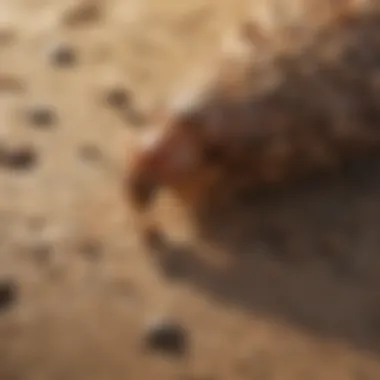

Remember: Prevention is better than cure. Investing time and effort into your home and yard maintenance can save you from expensive treatments down the line.
By prioritizing these practices, every homeowner can create a less inviting environment for termites, drastically reducing the likelihood of future infestations and swarming events. 🐜
Long-Term Pest Management Strategies
Long-term pest management is a vital part of maintaining a pest-free home, especially when it comes to termites. Understanding how to effectively manage these pests over an extended period can save homeowners significant time and money. The stakes are high; termite damage can lead to costly repairs and a decline in property value. The key elements in a long-term approach include integrating various pest management strategies and scheduling regular inspections.
Integrating Multiple Approaches
Termites aren’t a one-size-fits-all problem. Integrating multiple approaches caters to the unique conditions of each home. This could mean combining chemical treatments with natural solutions, or even physical barriers, like metal flashings or sand barriers. Here are a few strategies to consider:
- Chemical Treatments: Utilizing insecticides specifically designed for termites can eliminate existing populations. This should not be the only tool in your arsenal, though.
- Baiting Systems: These attract termites, leading them back to the colony and subsequently decreasing their numbers over time. This method is more environmentally friendly compared to traditional chemicals.
- Preventive Measures: Incorporating regular home maintenance, like sealing cracks or reducing moisture levels, can go a long way.
One size doesn’t fit all when managing termites and adapting strategies based on effectiveness in your area or home conditions is important. Being flexible gives homeowners the upper hand in thwarting these persistent pests.
Regularly Scheduled Inspections
You wouldn’t ignore a check-up at the doctor, would you? Similarly, regular inspections are crucial for long-term pest management. Conducting thorough inspections at least once a year, or more frequently if you live in a high-risk area, will help catch any infestations early. Here’s why they are essential:
"An ounce of prevention is worth a pound of cure."
- Early Detection: The sooner you spot signs of termites, the easier it is to manage them. Look for mud tubes or frass, which indicate activity.
- Tailored Treatment Plans: With regular inspections, pest control professionals can modify treatments based on new findings. It’s like adjusting a recipe to taste.
- Peace of Mind: Knowing your home is regularly checked provides assurance that your living space is secure from these destructive pests.
Homeowners can also take part in inspections by keeping their properties clutter-free and monitoring for any changes in the landscape. This could alert them to potential termite risks before they become a larger problem. In essence, diligence pays off, providing multifaceted defending techniques against termite threats.
Debunking Common Myths
Understanding the myths surrounding termite behavior after treatment is crucial for homeowners. There are various misconceptions that can lead to panic or ineffective prevention strategies. By addressing these misunderstandings, we equip ourselves to face the reality of termite swarming and what it truly signifies. This knowledge helps reduce unnecessary fears, guiding homeowners through proper post-treatment management.
Misunderstandings About Termite Behavior
One of the most widespread myths is that termites will completely vanish after treatment. Homeowners often expect that once a treatment is applied, their problems are all but solved, leading to a false sense of security. However, this isn't always the case.
Termites have a remarkable ability to adapt and survive, which can result in swarming behavior following a treatment. When affected by chemicals or other treatment methods, termites may disperse, prompting swarming as a survival instinct. This doesn't mean the property is still infested but rather indicates that the treatment has impacted their normal behavior. Many believe that swarming means a treatment has failed, but it's critical to understand that this is part of their biological response.
- Key Points on Misunderstandings:
- Swarming can actually indicate the treatment is having an effect.
- Dispersal is often a sign of survival, not an ongoing infestation.
- Education on termite behavior leads to more effective pest management strategies.
Dispelling Homeowner Fears
It's natural for homeowners to feel anxious after observing swarming termites. This fear can be exacerbated by the misinformation circulating around the internet and casual conversations. Many homeowners jump to conclusions, fearing their homes are still under siege.
As mentioned earlier, swarming does not necessarily indicate an active infestation. In fact, once treatment options are in place, the swarming can be interpreted as the termites’ last-ditch effort to reproduce before succumbing to the treatment. Understanding this can alleviate unnecessary panic. Here’s some reassurance:
- Swarming isn't a sign of infestation: It's a natural part of a colony’s lifecycle.
- Effective treatments can lead to increased swarming: This is a normal reaction and doesn’t mean your home is still infested.
- Knowledge is power: The more informed you are about termite behavior, the better you'll handle any situation that arises post-treatment.
"Knowledge not only empowers but also gives you peace of mind, allowing you to make informed decisions regarding pest management."
Homeowners must regularly monitor their surroundings post-treatment, not out of fear but armed with the understanding that swarming can happen and doesn’t necessarily mean there’s a failure in pest control. Keeping a vigilant eye and staying educated about termite behavior will lead to more successful long-term pest management.
Epilogue and Final Thoughts
In wrapping up our discussion on the complexities surrounding termite swarming after treatment, it becomes evident that this phenomenon is more than a mere nuisance; it represents a crucial intersection of biology, behavior, and pest management strategies. Understanding such intricacies not only empowers homeowners but also enhances their ability to tackle these persistent invaders with informed methods. By identifying why termites swarm post-treatment, homeowners can better position themselves in their ongoing battle against infestations.
One of the most pronounced benefits discussed in this article is the significance of continuous vigilance. Monitoring your property for signs of termite activity after treatment ensures no surprises creep up on you. Keeping a watchful eye can help catch any lingering issues before they spiral out of control. An untrained eye might overlook subtle indicators of a continued problem, which can end up costing more in repairs than any pest control service could save.
Additionally, homeowners should be aware of evolving pest management trends. As science advances, so too do the techniques available to tackle pest infestations. Future methods may pivot towards more eco-friendly and humane strategies that are less disruptive to everyday life. Homeowners who stay updated on these advancements often find themselves better equipped to handle pest issues as they arise.
"Being informed is your first line of defense against costly damages and stress caused by termite infestations."
As we turn our gaze toward the future, it’s important to remember that pest management is not a one-off engagement but rather an ongoing commitment. Taking proactive steps, such as regular inspections and understanding new preventive measures, can help homeowners stave off unwanted visitors. Ultimately, this approach transforms the fight against termites into a manageable, if not entirely pleasant, journey.
